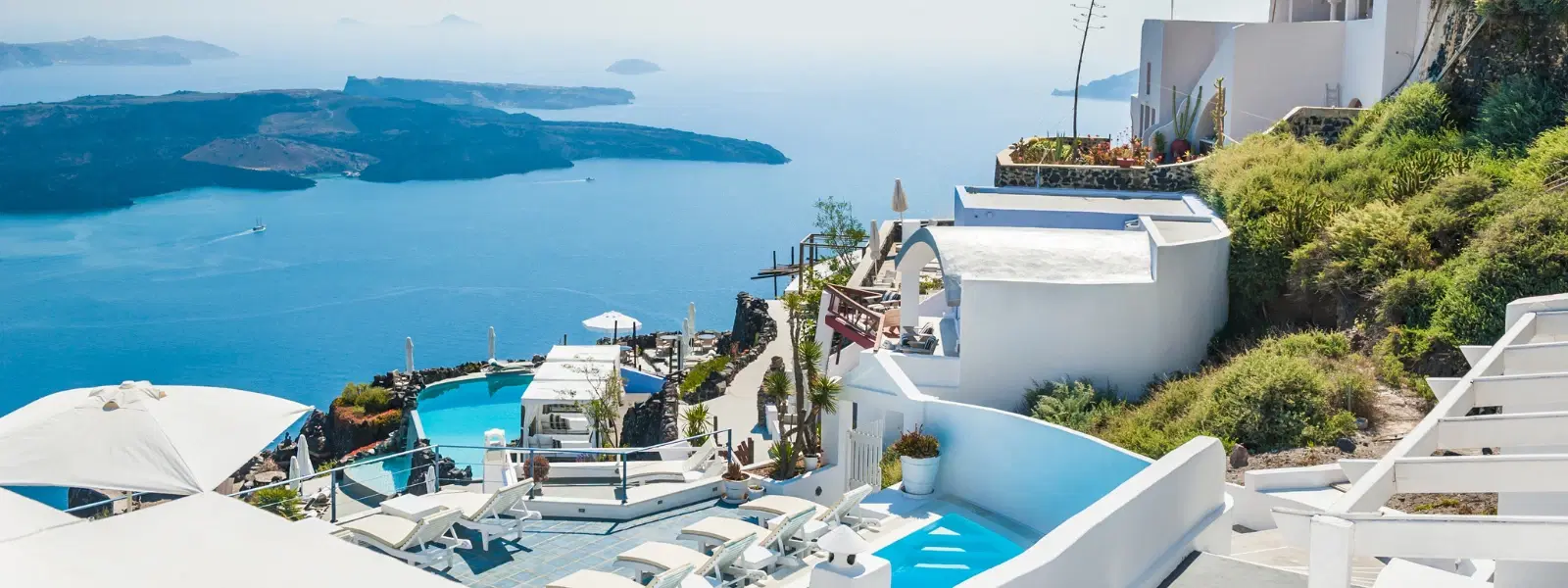
Hotels
•04 min read

Germany is home to a treasure trove of islands that combine stunning beaches, rich nature reserves, and unique cultural experiences. Whether nestled in the North Sea or the Baltic Sea, these islands offer unforgettable travel opportunities for curious travelers from India seeking both relaxation and adventure. In this post, you will find answers to the most frequently asked questions about German islands, learn travel tips, and discover highlights that can help plan an ideal island getaway.
A German island is defined by its geographical separation from the mainland and its distinct cultural identity. These islands can be found in two main regions: the North Sea islands, known for their rugged coastlines and dynamic tidal landscapes, and the Baltic Sea islands, celebrated for their serene beaches and historic charm. Each island, whether a bustling hub or a quiet retreat, offers a unique window into the local traditions and natural beauty.
Germany boasts over 80 islands, including both coastal islands and smaller inland ones scattered on lakes and rivers. These islands form a fascinating archipelago. For example, the popular German coastal islands such as Sylt, Rügen, Fehmarn, and Helgoland are just a few among many, while some hidden gems remain off the beaten path, offering more intimate experiences for those willing to explore.
A visual guide can help categorize these islands based on their location. Without a doubt, notable islands like Sylt, Rügen, Fehmarn, and Helgoland are household names for those interested in German island travel. Whether you are the wanderer looking for budget-friendly excursions or the planner searching for family-friendly attractions, the comprehensive geographical spread of these islands makes them a perfect destination for every type of traveler.
The North Sea islands, including destinations like Sylt, Helgoland, and Amrum, are filled with activities that cater to diverse interests. Popular pursuits here include birdwatching in serene natural reserves, exploring the unique mudflats during guided tours, or indulging in wellness retreats along the rugged shores. These islands embody an adventurous spirit while offering plenty of spaces for relaxation.
The islands off the Baltic Sea, including Rügen, Usedom, and Hiddensee, are renowned for their rich heritage and natural reserves. These islands strike a balance between cultural enrichment and nature's calm. Visitors often enjoy strolling through historic towns, exploring preserved cultural landmarks, and spending time on family-friendly beaches that resonate with both the young and the old.

If pristine beaches and water activities are what you seek, German beach islands have plenty to offer. The image of Strandkorb beach chairs lined along sun-kissed shores, opportunities for kite surfing, and mesmerizing sunset views encapsulate the essence of a perfect day on the islands. These locales often serve as a canvas for both relaxation and aquatic adventures.
Seasonal travel plays a key role in the experience of German islands. Summer is ideal for beach activities, water sports, and vibrant festivals on islands like Sylt. Meanwhile, winter brings cozy retreats and the allure of quiet, crisp landscapes—perfect for reflective getaways. Align your travel plans with local events to maximize your experience.
Connecting to these islands is hassle-free. Whether it’s via well-organized ferry services, well-maintained bridges, or local flight options, reaching these destinations is a breeze. For eco-friendly travel, consider the car-free islands such as Juist and Baltrum, which offer a unique pace where nature and the environment are integral parts of the experience.
German islands offer a variety of lodging options suited to different traveler profiles. From beachfront resorts and cozy guesthouses to nature-friendly campsites, every option is designed to enhance your stay while blending into the local landscape. Some of these unique stays feature settings reminiscent of lighthouse hotels or wellness retreats that emphasize peace and rejuvenation without compromising on the local charm.
This segment of German islands is a haven for nature enthusiasts. Islands with sprawling nature reserves, dedicated wildlife sanctuaries, and scenic hiking trails capture the raw beauty of the region. The Halligen islands, with their fascinating flooding landscapes during high tide, are a prime example of nature’s unpredictable artistry.
Every island in Germany offers a unique cultural experience. From local cuisines steeped in history to festivals that celebrate regional traditions, there is much to explore. For instance, seal-watching on Helgoland or experiencing the vibrant Frisian culture on Föhr provides travelers with insights into the local way of life. These traditions resonate deeply with visitors, making each journey memorable.

For those inclined to seek solitude and tranquility, off-the-beaten-path islands such as Pellworm and Poel remain inviting. These lesser-known islands are perfect for travelers who desire intimate moments with nature, away from crowded tourist hubs. Their serene ambiance ensures memorable moments enriching both the heart and the soul.
Sylt is often called the 'Hamptons of Germany' for its luxurious resorts, gourmet restaurants, and stunning beaches. But beyond the glamour, it’s also a haven for nature enthusiasts with its expansive mudflats, rolling dunes, and dedicated bird sanctuaries.
Germany has over 80 islands, including coastal islands in the North Sea and Baltic Sea, as well as inland islands on lakes and rivers.
While beauty is subjective, Rügen is often considered one of the most beautiful islands due to its chalk cliffs, sandy beaches, and lush forests.
Rügen is Germany’s largest island, located in the Baltic Sea, covering an area of approximately 926 square kilometers.
Sylt is renowned for its upscale resorts, stunning beaches, and unique Frisian culture, making it a hotspot for wellness tourism and breathtaking natural explorations.
German islands offer a diverse mix of natural beauty, cultural richness, and travel-friendly amenities that cater to every kind of explorer. Whether you are a wanderer on the lookout for spontaneous adventures or a planner aiming for a hassle-free family getaway, these islands provide unforgettable experiences. Embrace the charm of North Sea and Baltic Sea gems, and let your next journey be one of discovery and rejuvenation.